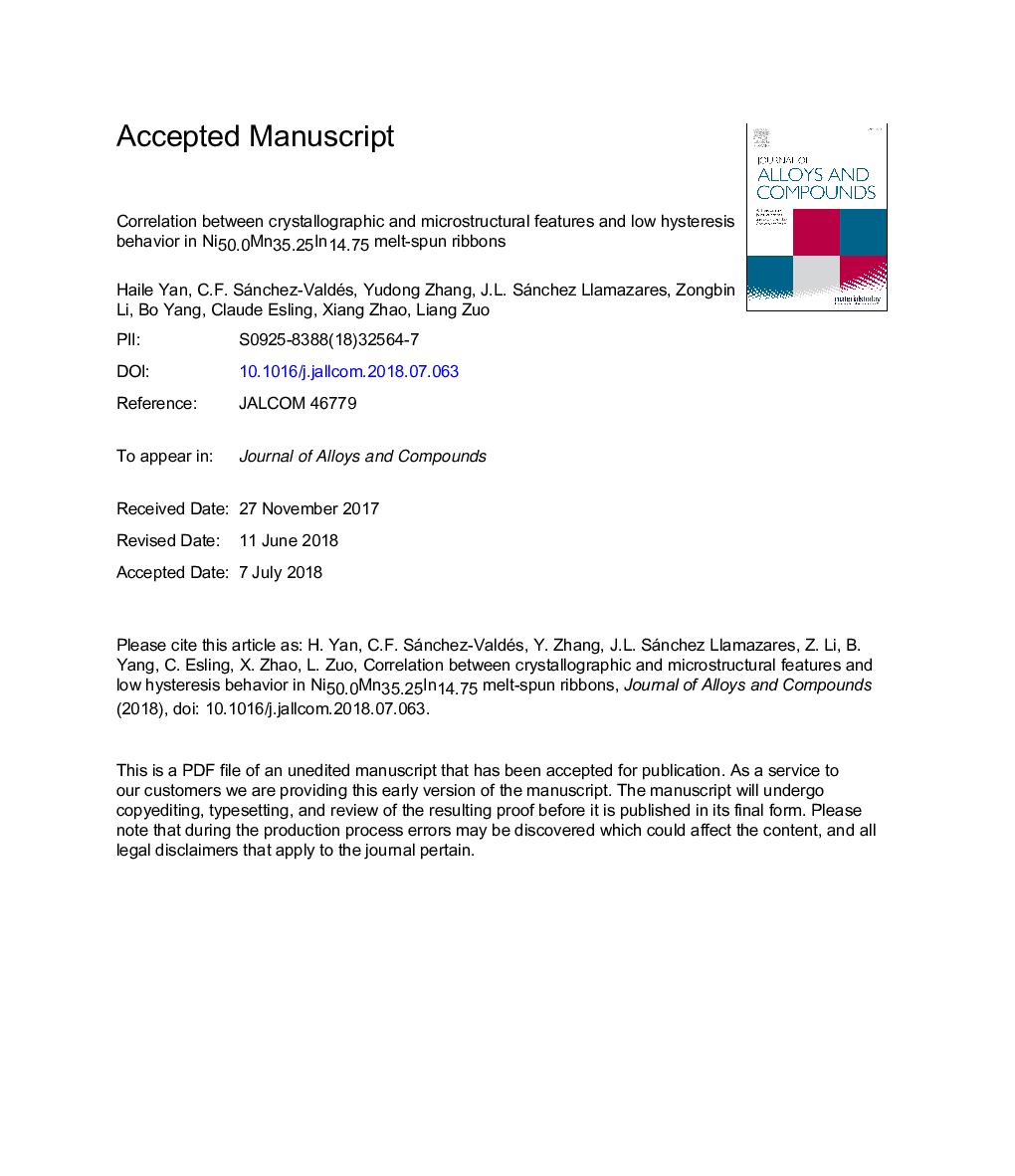| Article ID | Journal | Published Year | Pages | File Type |
|---|---|---|---|---|
| 7990314 | Journal of Alloys and Compounds | 2018 | 19 Pages |
Abstract
In this work, crystallographic, microstructural and magnetocaloric investigations were performed on textured Ni50Mn35.25In14.75 melt-spun ribbons with low thermal (6â¯K) and magnetic-field induced hysteresis (â0.73â¯Jâ¯kgâ1 at 2â¯T) and moderate maximum magnetic entropy change ÎSMmax (11â¯Jâ¯kgâ1â¯Kâ1 at 5â¯T) at room temperature (302â¯K). The austenite in the ribbons crystallizes into a L21 structure, whereas martensite has a monoclinic incommensurate 6â¯M modulated structure as determined with the superspace theory. By means of electron backscatter diffraction technique, the morphological and crystallographic features of microstructure were systematically characterized. Ribbons possess a fine microstructure with an average grain size (initial austenite phase) of around 10â¯Î¼m, whereas the 6â¯M martensite has a self-accommodated microstructure with 4 kinds of twin-related martensite variants. During inverse martensitic transformation, the austenite prefers to nucleate at the grain boundaries of initial austenite. By means of cofactor conditions and crystallographic orientation analyses, the good geometrical compatibility between austenite and martensite was confirmed. Based on the crystal structure and microstructure information obtained, the reason of the low thermal hysteresis was discussed.
Keywords
Related Topics
Physical Sciences and Engineering
Materials Science
Metals and Alloys
Authors
Haile Yan, C.F. Sánchez-Valdés, Yudong Zhang, J.L. Sánchez Llamazares, Zongbin Li, Bo Yang, Claude Esling, Xiang Zhao, Liang Zuo,
